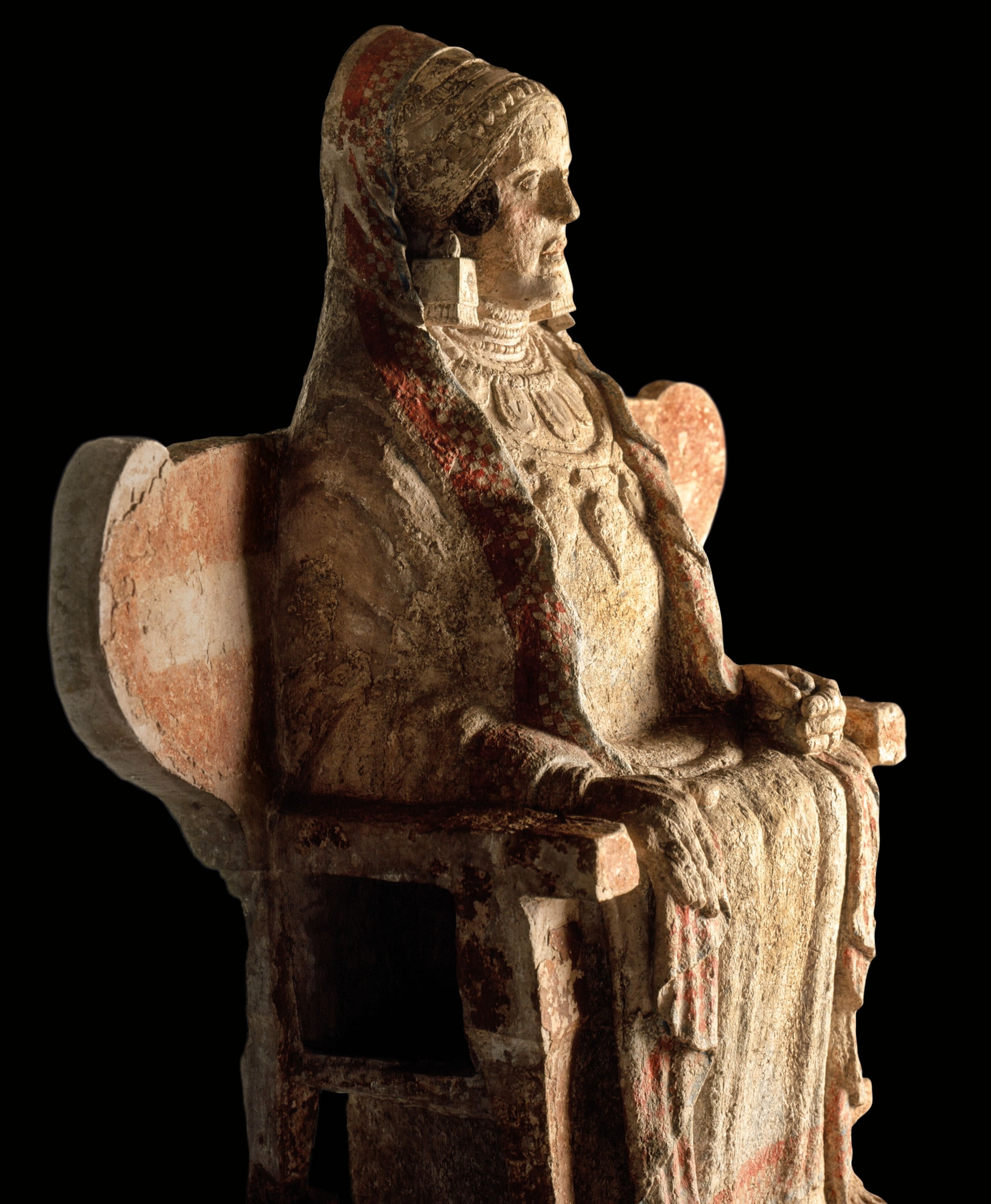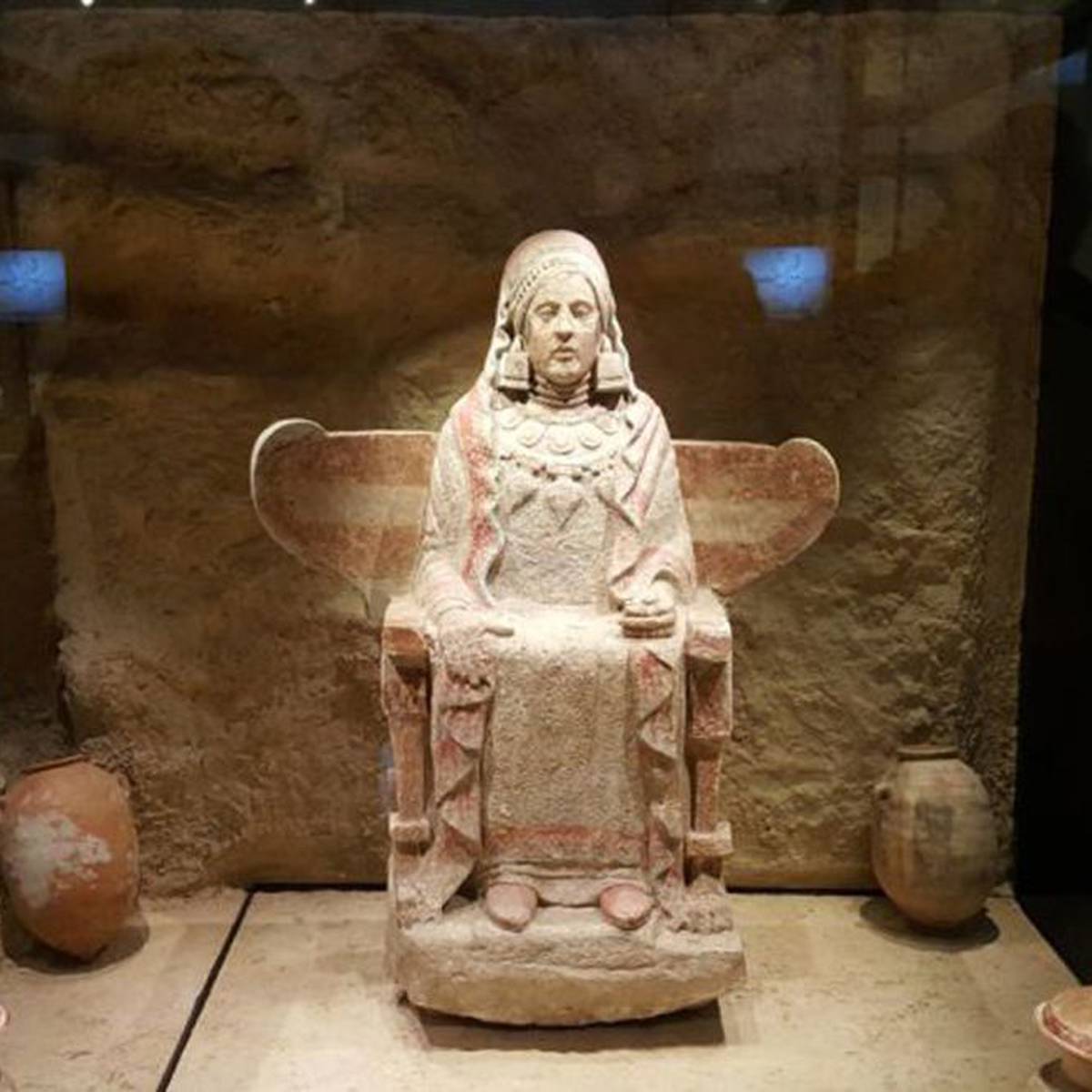The archaeological world has long been fascinated by the elusive Iberian civilization that once thrived in the Iberian Peninsula. In 1971, a remarkable discovery in southern Spain shed new light on this enigmatic culture, as archaeologists unearthed a four-foot-high limestone sculpture known as the ‘Lady of Baza.’ This exquisite funerary statue, dating back to around 380 B.C., has become a cherished window into the past, revealing intriguing insights into the lives and customs of the ancient Iberians.
North of the small city of Baza, in the region known as Cerro del Santuario, a pre-Roman necropolis was being excavated in 1971. On a fateful July morning, as the Andalusian sun beat down, a worker’s tool struck something hard beneath the earth. Intrigued, archaeologist Francisco José Presedo came to investigate, and as the soil was cleared away, the face of a woman emerged, finally seeing the light after nearly 2,500 years underground.
A Remarkable Funerary Artifact

The Lady of Baza, as the sculpture came to be known, is a remarkable example of Iberian funerary art. The four-foot-high statue depicts a bejeweled woman, richly dressed and seated on a winged throne. Once vividly painted, the work still bears traces of pigments, including a rosy blush on the cheeks and red-and-white squares along the border of her cloak. Inside a compartment in the right side of the statue, cremated human remains were found, confirming the Lady of Baza’s role as a funeral urn.
Connections to the Iberian World

The Lady of Baza resembles other carved stone female figures found elsewhere in Spain, such as the Lady of Elche, a similar artifact discovered in 1897. Both statues were once richly painted and adorned with Iberian attire, headdresses, earrings, and necklaces, providing valuable insights into the culture’s artistic traditions and fashion.
These objects were products of the pre-Roman Iberians, a culture that is still shrouded in considerable mystery. The statue’s details, however, link the Iberians to other cultures around the Mediterranean, including the Romans and the Carthaginians, as the Iberian homeland became embroiled in the struggle between these two powers a century after the Lady of Baza was carved.
The Enigma of the Iberians
Writers in antiquity referred to the people who lived across a swath of what is now Spain as Iberians, but archaeologists use the term in a stricter sense to mean the original Bronze Age peoples in that region. Descended from the Argar culture, the Iberians emerged as a complex, hierarchical society around 1000 B.C., becoming skilled in metalworking and engaging in trade with merchants from the eastern Mediterranean.

The arrival of Celtic newcomers in the eighth century B.C. led to the creation of a hybrid “Celtiberian” culture, though the arid hillsides of the southeastern Mediterranean coast retained higher concentrations of the original Iberian population.
Learning from the Lady
Iberian scholars consider that the cremated remains in the Lady of Baza’s side are those of an aristocratic local Bastetani woman who died around 380 B.C. The statue’s elaborate adornments and funerary role provide invaluable clues about the social status and beliefs of the Iberian elite, while also highlighting the cultural connections between the Iberians and the wider Mediterranean world.
The discovery of the Lady of Baza has been a game-changer for our understanding of ancient Iberian civilization. This captivating funerary statue, with its vibrant colors, intricate details, and hidden cremated remains, has opened a window into a world that was once shrouded in mystery. As scholars continue to unravel the enigma of the Iberians, the Lady of Baza stands as a testament to the enduring power of archaeology to illuminate the past and connect us to the rich cultural tapestry of our ancestors.
